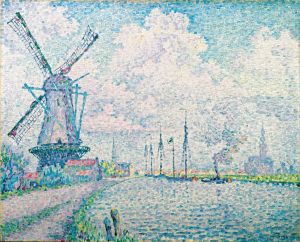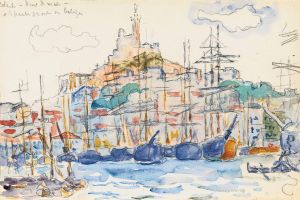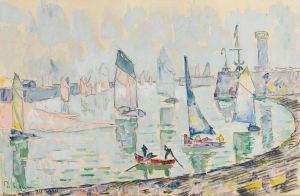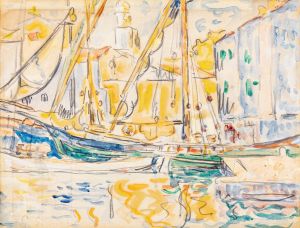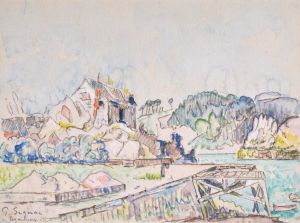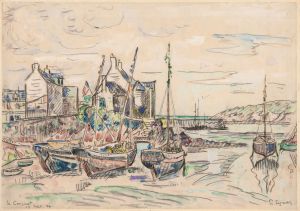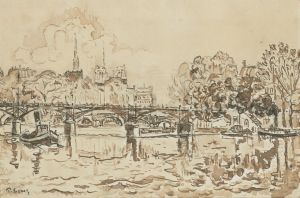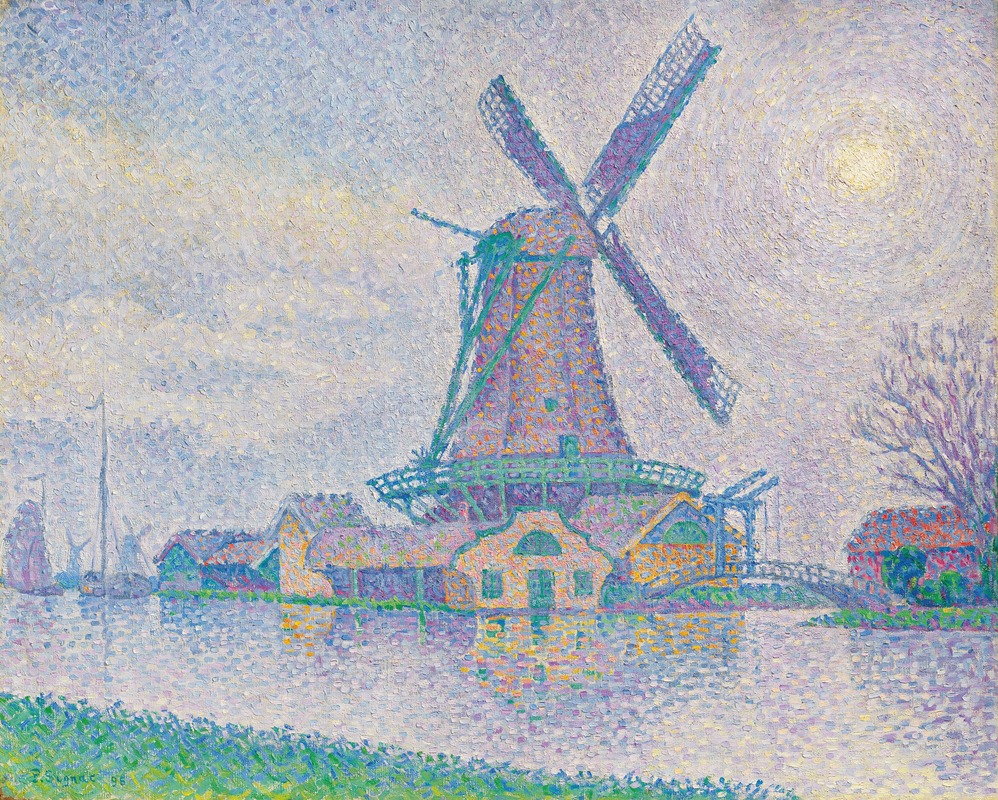
Moulin d’Edam
A hand-painted replica of Paul Signac’s masterpiece Moulin d’Edam, meticulously crafted by professional artists to capture the true essence of the original. Each piece is created with museum-quality canvas and rare mineral pigments, carefully painted by experienced artists with delicate brushstrokes and rich, layered colors to perfectly recreate the texture of the original artwork. Unlike machine-printed reproductions, this hand-painted version brings the painting to life, infused with the artist’s emotions and skill in every stroke. Whether for personal collection or home decoration, it instantly elevates the artistic atmosphere of any space.
Paul Signac's painting Moulin d’Edam (translated as Mill at Edam) is a notable work by the French Neo-Impressionist artist, created in 1898. Signac, a leading figure in the Pointillist movement, was deeply influenced by the theories of Georges Seurat, who pioneered the technique of applying small, distinct dots of color to create an image. Signac expanded on this method, often using broader, more visible brushstrokes while maintaining the divisionist approach to color.
The painting depicts a windmill in the Dutch town of Edam, located in the Netherlands. Edam, known for its historic architecture and picturesque landscapes, was a source of inspiration for Signac during his travels. The composition captures the serene beauty of the Dutch countryside, with the windmill standing as a central focal point. The surrounding environment, including the water and sky, is rendered in vibrant, harmonious colors, showcasing Signac's mastery of light and atmosphere.
Signac's choice of subject reflects his interest in maritime and coastal themes, which were recurring motifs throughout his career. As an avid sailor, he often explored port towns and waterways, incorporating these experiences into his art. The painting exemplifies his ability to blend scientific precision in color theory with an emotive, almost lyrical quality.
Moulin d’Edam is a testament to Signac's dedication to the Neo-Impressionist style, which sought to bring a sense of order and structure to the spontaneity of Impressionism. By meticulously applying color in a way that emphasizes its optical effects, Signac created works that were both innovative and visually striking.
The painting is part of a broader body of work that highlights Signac's travels across Europe, where he captured the unique character of various locales. Today, Moulin d’Edam is recognized as an important example of his artistic legacy, reflecting his contributions to the development of modern art. The painting is housed in the Kröller-Müller Museum in Otterlo, Netherlands, which holds a significant collection of works by Signac and other artists of the late 19th and early 20th centuries.






